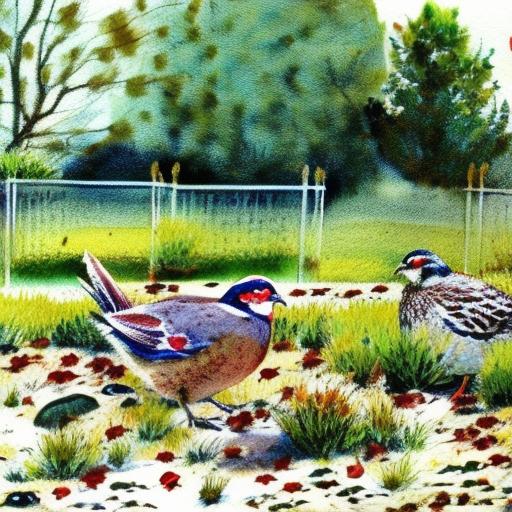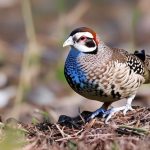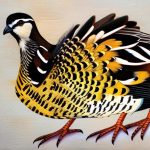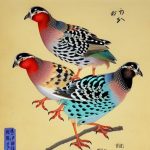Homemade quail breeding pens are an essential component of any quail breeding operation. Whether you are a hobbyist or a commercial breeder, having the right breeding pens is crucial for the health and well-being of your quail. These pens provide a safe and secure environment for your quail to breed, lay eggs, and raise their young. In addition, they allow you to control the breeding process and ensure that your quail are healthy and productive. In this article, we will discuss the key considerations for designing, building, and maintaining homemade quail breeding pens. We will also provide tips for successful breeding and ensuring the health and safety of your quail in the breeding pens.
Key Takeaways
- Homemade quail breeding pens are a cost-effective way to raise quail for eggs or meat.
- Select materials such as wire mesh, wood, and metal for durability and ease of cleaning.
- Design pens with proper ventilation, nesting areas, and easy access for cleaning and maintenance.
- Regularly clean and disinfect pens to prevent disease and maintain quail health.
- Monitor quail for signs of illness, provide proper nutrition, and minimize stress for successful breeding.
Selecting the Right Materials for Your Quail Breeding Pens
When it comes to building homemade quail breeding pens, selecting the right materials is crucial. The pens need to be sturdy, secure, and easy to clean. For the frame of the pens, you can use materials such as wood or PVC pipe. Wood is a traditional choice and provides a natural look, but it can be prone to rotting and may require more maintenance. On the other hand, PVC pipe is durable, lightweight, and easy to clean, making it a popular choice for quail breeding pens. For the walls and flooring of the pens, wire mesh is an excellent option as it allows for good ventilation and prevents predators from entering the pens. Additionally, you will need nesting boxes for your quail to lay their eggs, and these can be made from wood or plastic. It’s important to ensure that all materials used are non-toxic and safe for your quail.
When selecting materials for your quail breeding pens, it’s also important to consider the size of your operation and the space available. If you have a small number of quail, you may only need a few small pens, whereas a larger operation will require more pens and a more efficient design. Regardless of the size of your operation, it’s important to prioritize the comfort and safety of your quail when selecting materials for your breeding pens.
Designing and Building Your Quail Breeding Pens
Designing and building homemade quail breeding pens requires careful planning to ensure that they meet the needs of your quail and are practical for your operation. The pens should provide enough space for your quail to move around comfortably, as overcrowding can lead to stress and aggression. Each pen should also have separate areas for nesting, feeding, and drinking to mimic the natural environment of quail. When designing the layout of the pens, consider factors such as ease of access for cleaning and maintenance, as well as protection from predators and the elements.
When building the pens, it’s important to ensure that they are secure and predator-proof. This means using sturdy materials for the frame and walls, as well as adding a secure door or lid to prevent predators from entering the pens. Additionally, consider adding a roof or cover to protect your quail from rain and extreme temperatures. The flooring of the pens should be easy to clean and provide good drainage to prevent moisture buildup. Finally, consider adding perches or platforms for your quail to roost on, as well as nesting boxes for them to lay their eggs.
Maintaining and Cleaning Your Quail Breeding Pens
Maintaining and cleaning homemade quail breeding pens is essential for the health and well-being of your quail. Regular cleaning helps prevent the buildup of waste and bacteria, which can lead to disease and poor hygiene. It’s important to establish a regular cleaning schedule and stick to it to ensure that your pens remain clean and sanitary. This may involve removing soiled bedding, scrubbing the walls and floors, and disinfecting the pens with a safe cleaning solution.
In addition to regular cleaning, it’s important to inspect the pens regularly for any signs of damage or wear. Repair any broken or damaged parts immediately to prevent predators from entering the pens or causing harm to your quail. It’s also important to check that all doors and latches are secure to prevent escapes or intrusions. Finally, ensure that the pens are well-ventilated to prevent moisture buildup and maintain good air quality for your quail.
Ensuring the Health and Safety of Your Quail in the Breeding Pens
Ensuring the health and safety of your quail in the breeding pens is essential for successful breeding and productivity. One key aspect of this is providing a balanced diet with access to clean water at all times. Quail require a diet high in protein, so it’s important to provide them with a commercial game bird feed or a homemade mix that meets their nutritional needs. Additionally, consider supplementing their diet with fresh greens, fruits, and vegetables to provide variety and additional nutrients.
Another important aspect of ensuring the health and safety of your quail is monitoring their behavior and condition regularly. Look out for signs of illness or injury, such as lethargy, loss of appetite, or abnormal droppings, and take appropriate action if necessary. It’s also important to handle your quail gently and minimize stress during handling or when introducing new birds to the pens.
Finally, consider implementing biosecurity measures to prevent the spread of disease within your quail population. This may involve quarantining new birds before introducing them to existing flocks, as well as limiting access to your breeding area to prevent contamination from wild birds or other animals.
Tips for Successful Breeding in Homemade Quail Breeding Pens

Breeding quail in homemade breeding pens can be a rewarding experience when done successfully. To increase your chances of successful breeding, consider providing your quail with optimal conditions for mating and egg laying. This may involve providing a comfortable nesting area with suitable bedding material, as well as ensuring that there are enough males to females in each pen to encourage mating behavior.
Additionally, consider using artificial lighting to simulate longer daylight hours during the breeding season. This can help stimulate egg production and increase the chances of successful hatching. It’s also important to collect eggs regularly to prevent them from being damaged or eaten by other quail.
Finally, consider keeping detailed records of your breeding activities, including mating behavior, egg production, and hatch rates. This can help you identify patterns and make informed decisions to improve your breeding success in the future.
Conclusion and Final Considerations for Homemade Quail Breeding Pens
In conclusion, homemade quail breeding pens are an essential component of any quail breeding operation. Selecting the right materials, designing practical layouts, maintaining cleanliness, ensuring health and safety, and implementing successful breeding practices are all crucial aspects of successful homemade quail breeding pens.
When designing and building your own quail breeding pens, it’s important to prioritize the comfort and safety of your quail while considering practicality for maintenance and cleaning. Regular maintenance is essential for keeping your pens clean and safe for your quail population.
By following these guidelines and tips for successful breeding in homemade quail breeding pens, you can create a healthy and productive environment for your quail while enjoying the rewards of successful breeding operations.
If you’re interested in creating a comfortable and efficient living space for your quails, you may also want to consider building a well-designed chicken coop. A well-constructed coop, such as the A-frame chicken coop featured in this article, can provide valuable insights into creating a suitable environment for your poultry. Additionally, learning how to properly insulate a chicken coop, as discussed in this article, can help you understand the importance of maintaining a consistent temperature for your birds. For those looking for inspiration, the chicken coop in Grand Island, NE, highlighted in this article showcases innovative design and functionality that can be adapted to suit your quail breeding pens.
FAQs
What are homemade quail breeding pens?
Homemade quail breeding pens are enclosures or structures that are built at home to house and breed quails. These pens are designed to provide a safe and comfortable environment for quails to lay eggs and raise their young.
What are the benefits of using homemade quail breeding pens?
Homemade quail breeding pens allow quail breeders to have more control over the breeding process. They can customize the size and design of the pens to suit their specific needs and space constraints. Additionally, homemade pens can be more cost-effective than purchasing pre-made pens.
What materials are commonly used to build homemade quail breeding pens?
Common materials used to build homemade quail breeding pens include wood, wire mesh, PVC pipes, and metal hardware. These materials are chosen for their durability, ease of construction, and ability to provide adequate ventilation and protection for the quails.
What are some important considerations when building homemade quail breeding pens?
When building homemade quail breeding pens, it is important to consider factors such as adequate space for the quails, protection from predators, proper ventilation, and easy access for cleaning and maintenance. Additionally, the pens should be designed to minimize stress on the quails and provide a suitable environment for breeding and raising young quails.
Are there any regulations or guidelines to consider when building homemade quail breeding pens?
Quail breeders should be aware of any local regulations or guidelines regarding the construction and use of quail breeding pens. It is important to ensure that the pens meet any legal requirements and provide a safe and humane environment for the quails. Additionally, breeders should consider best practices for quail welfare and husbandry when designing and building their pens.
Meet Walter, the feathered-friend fanatic of Florida! Nestled in the sunshine state, Walter struts through life with his feathered companions, clucking his way to happiness. With a coop that’s fancier than a five-star hotel, he’s the Don Juan of the chicken world. When he’s not teaching his hens to do the cha-cha, you’ll find him in a heated debate with his prized rooster, Sir Clucks-a-Lot. Walter’s poultry passion is no yolk; he’s the sunny-side-up guy you never knew you needed in your flock of friends!







